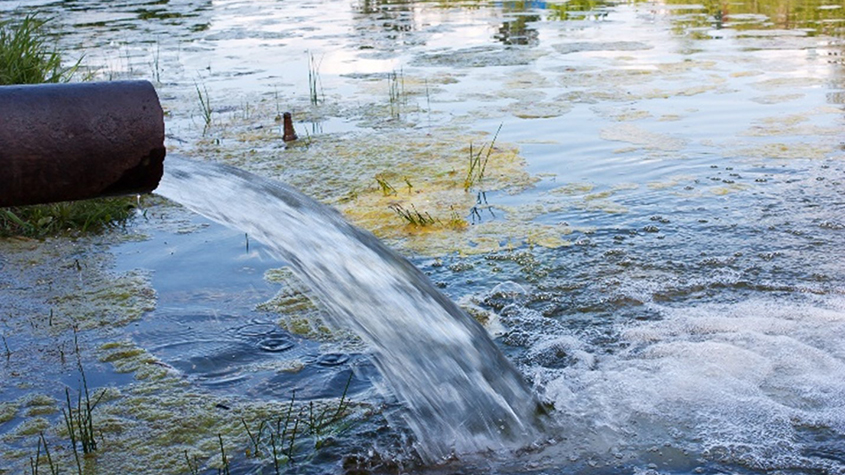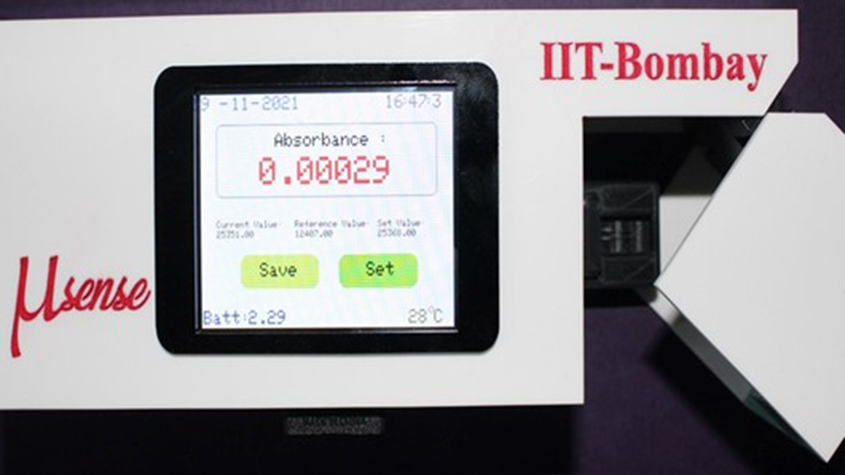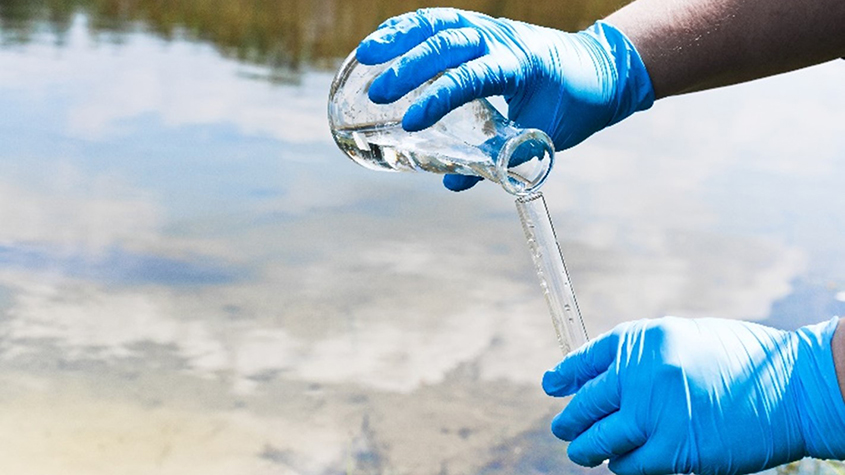Environmental Alarms: the Impact of AMR on Water Bodies and the Role of Innovative Monitoring
January 17, 2024
Antimicrobial resistance (AMR) – when antibiotics no longer work in the way they are intended to work because the targeted bacteria have become resistant to their effects) – is a growing health challenge worldwide. Exposure to antibiotics from environmental sources due to environmental pollution resulting from unchecked discharge of active antibiotic ingredients from manufacturing facilities and sewage as well as sewage treatment plants are linked to the spread of AMR. For this reason, the global focus has been on mitigating the human, agricultural and Water, Sanitation and Hygiene (WASH) contributions to AMR. Fortunately, innovative solutions are emerging; this article highlights one such solution and the underlying intellectual property that supports the innovation.
AMR and environmental health
India is the world’s largest producer of antibiotics, supplying over 40% of the global market according to one study. The industry is diverse, with small, medium, and large companies engaged in Active Pharmaceutical Ingredient (API) and formulation manufacturing. There is growing concern due to the presence of high concentrations of antibiotic compounds in water resources near some pharmaceutical manufacturing clusters due to the discharge of untreated effluents from the factories.
Routine surveillance of environmental antibiotic concentration and resistant bacteria can guide the development and implementation of appropriate policy interventions. High costs associated with regular monitoring of antimicrobial levels in wastewater increase the challenge of comprehensive monitoring. Studies find that innovative, affordable, and easy-to-use methods for detecting antibiotic residues and resistant bacteria are urgently needed.

Birth of an invention
Professor Soumyo Mukherji, the Madhuri Sinha Chair Professor in Biomedical Engineering at the Indian Institute of Technology in Bombay (IITB), is a leading innovator of biosensors and bioinstrumentation, and developing sensing systems for health, water quality and environmental monitoring. Professor Mukherji has carved a niche by creating advanced sensors which detect antibiotics and other elements impacting water quality.
His goal is to make affordable sensors that give quick, trustworthy results, sidestepping the long wait times of traditional lab tests. “I wanted to do something challenging, that goes beyond soil contamination, and can have a positive impact on society”, says Dr. Mukherji. “The issue of AMR and water contamination is serious. Veterinarians, for instance, may need more than 10 units of doses to treat a clinical disease for cows, where they earlier used one unit of dose”, he notes, reflecting on how cattle drink water from the rivers which are also used for irrigation.
Professor Mukherji has developed an advanced sensing device platform using optical fibers that detects a wide range of substances like bacteria, antibiotics, traces of pesticides, or other specific compounds simply by altering the specific detectors on its surface. “When I immobilize a specific receptor, i.e., antibody, to a bacteria, it will detect that bacteria”, explains Dr. Mukherji, demonstrating the platforms versatility to go beyond responding to AMR, and its applicability for broader testing. The device is capable of measuring ciprofloxacin, enrofloxacin and some beta-lactam antibiotics, which are recurring antibiotics linked to AMR. The team continues to identify and develop receptors for other antibiotics as well.

A standout feature of this device, which has been adapted and used in an Indo-United Kingdom research project called AMSPARE, is the compact design which is space-efficient and enhances its portability. This makes it an ideal tool for use, ranging from remote environmental sites to modern pharmaceutical laboratories. The user-friendly interface makes it accessible to be operated with ease by professionals across different sectors. Moreover, the device is designed for efficiency, delivering results within a remarkably short time frame of 20 to 30 minutes. The results are displayed in a numerical format on the device’s screen, making them easy to read and interpret.
At the heart of its functionality is the device’s capability to identify extremely low concentrations of contaminants. It can currently detect antibiotic levels as low as one part per billion. The ability to detect such low concentrations means that it can be a vital tool in the early detection and prevention of AMR spread, providing critical data that can support the development of both local and global health strategies.
The base instrument is cost-efficient and operates using specialized cartridges which are tailored for specific detection tasks. When evaluated against traditional laboratory tests for AMR and water contamination in terms of cost and duration, the invention emerges as an economical and efficient innovation, marking a significant advancement in on-site scientific testing.
Intellectual property underpinning the invention
The invention is catching global attention for its versatility and reliability. “The technology has been developed through a joint project between five entities, including the University of the West of Scotland and Indian Institute of Technology Bombay”, says Dr. Mukherji. The IITB holds the patents, and Dr. Mukherji and his collaborators are named as inventors. Both the institution and the innovators have a shared agreement, receiving royalties from the technology.
The potential of the invention for improving public health is immense. “While direct lab-to-market production might not be commercially viable, plans are in motion for broader collaborations. We have identified different partners in order to cover unique regional needs – from ensuring safe drinking water in India to addressing pharmaceutical needs in western markets”, said Dr. Mukherji. The technology has also garnered significant interest from several countries, with inquiries and requests for its manufacturing and utilization, which could open doors to potential licensing opportunities. These developments underscore the substantial intellectual property rights associated with Dr. Mukherji’s work, and its potential for broader impact on a global scale.

Minimizing risk and measuring contamination
Efforts are also being made at a global level to respond to the challenge of AMR. In 2017, the environmental impacts of AMR were recognized by the United Nations Environment Assembly (UNEA-3), the world’s highest-level decision-making body for matters related to the environment, leading up to the publication of a report titled “ Environmental Dimensions of Antimicrobial Resistance”. This report calls for a strengthening of environmental action within the One Health response to AMR, and recognizes that human, animal, and environmental health are inextricably linked, meaning that the environment and environmental pollutants play a key role in the development, transmission and spread of AMR.
Responsible Antibiotic Manufacturing Platform (RAMP), for instance, seeks to reduce the spread of AMR due to antibiotics in the environment through the adoption of sustainable monitoring, manufacturing, and procurement practices in India and other parts of the world with a sole focus on evaluating the impact of antibiotic manufacturing on the spread of AMR.
In 2022, the AMR Industry Alliance (AMRIA) developed an Antibiotic Manufacturing Standard that outlines a risk-based strategy for evaluating and managing the waste streams associated with the manufacturing of antibiotics. AMRIA brings together over 100 biotech, diagnostics and pharma companies and their local suppliers to promote sustainable antibiotic manufacturing practices across the entire life sciences manufacturing and procurement value chain.
The multifaceted challenge of AMR encompasses human health, animal well-being, and the delicate balance of our environment. Innovative water monitoring technologies, such as those pioneered by Dr. Soumyo Mukherji, are instrumental in understanding and combating AMR’s environmental impact. Their underpinning intellectual property presents a bridge to progress, offering potential solutions with global implications.